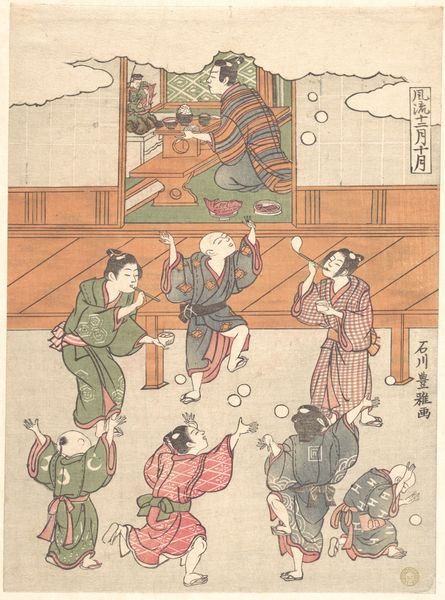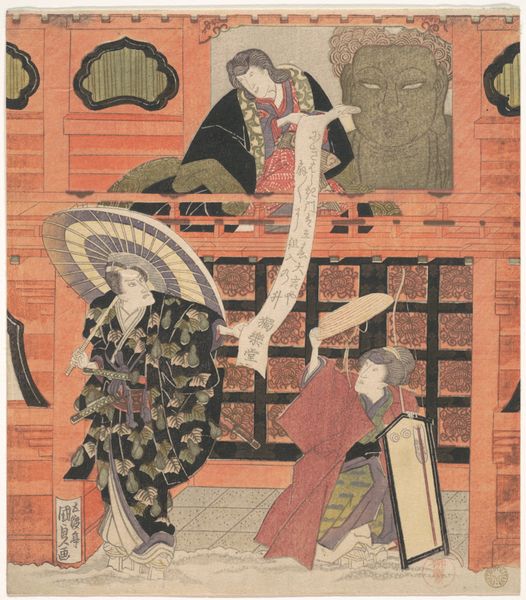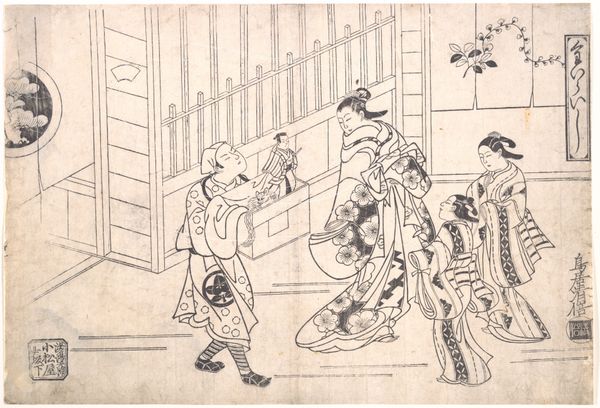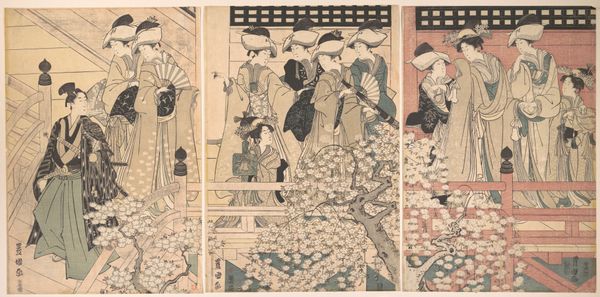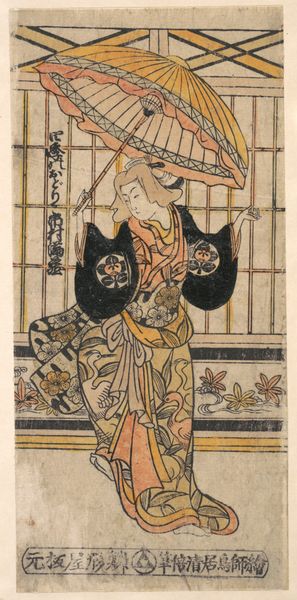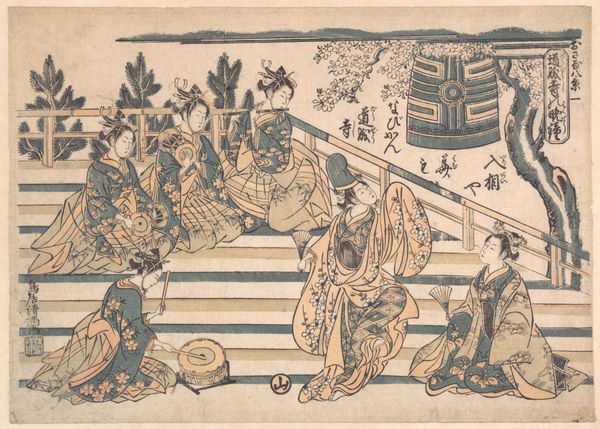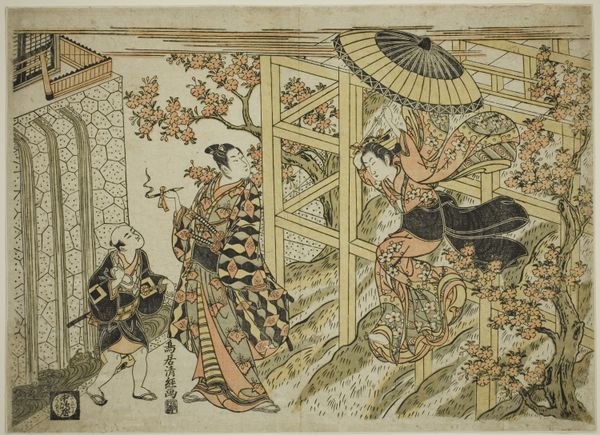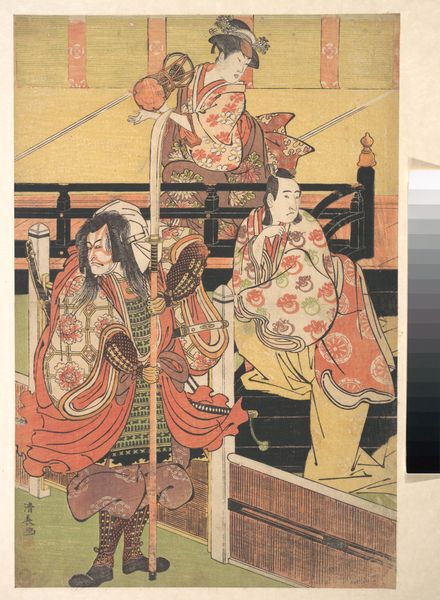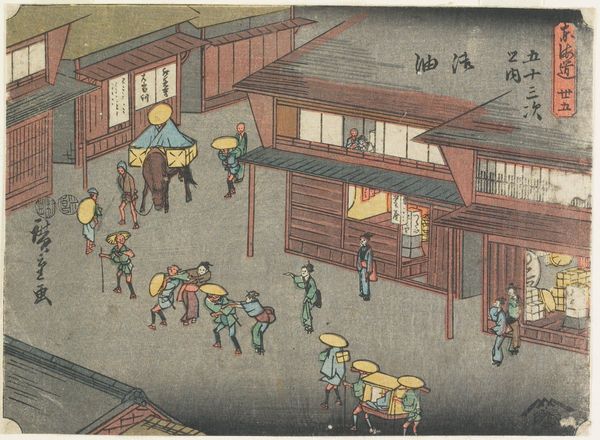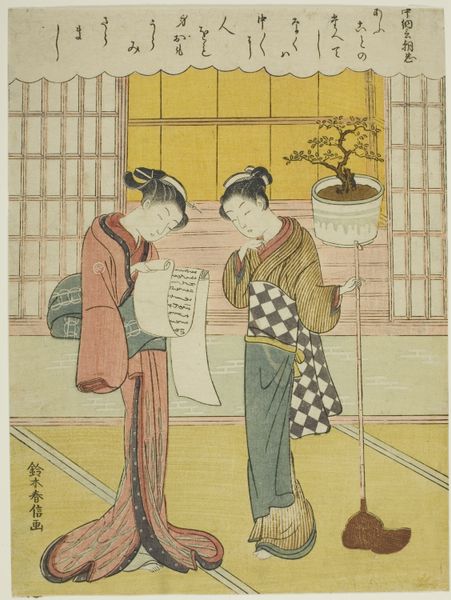
print, woodblock-print
# print
#
asian-art
#
ukiyo-e
#
woodblock-print
#
genre-painting
Dimensions: H. 10 in. (25.4 cm); W. 7 3/8 in. (18.7 cm)
Copyright: Public Domain
Curator: Welcome. We're here to consider Ishikawa Toyomasa's woodblock print, "The Eleventh Month," made sometime between 1757 and 1777. What's your first take on this? Editor: It strikes me as quite lighthearted. Despite the muted tones, there's a sense of joyous anticipation among the figures gathered here. The scene bubbles with contained energy. Curator: Let’s consider the formal elements that construct that energy. Look at the layering: the geometric screen, the frieze-like expanse of the curtain, the eaves and roof above—all creating planes of visual incident. Editor: Precisely, those layered planes offer up multiple narratives. Below, mothers and children crane their necks in shared wonder, mirroring, perhaps, the elevated actor enthroned above them. Curator: The actor and his stage become an aesthetic event of geometric proportions as his platform sits almost impossibly in front of a wall hanging, while framing theatrical space beneath plum branches and paper lanterns. Toyomasa flattens it all! Editor: Indeed! Notice how he merges interior and exterior spaces. I read this as a depiction of a Kabuki performance during the peak of the theater season. Each detail becomes a clue, offering cultural cues to his 18th century Japanese audience. Curator: It's that conflation of planes I find so powerful: the abstraction into shape allows our eye to decipher space by shape itself, not any forced depth or classical perspectival construct. It’s almost pure pattern. Editor: Perhaps even more powerful is its capture of fleeting human attention. It’s not only a Kabuki stage being represented, but the human psyche’s fascination with performance, wonder, even escapism through symbol and imagery. What lasting echoes does this hold of ritual, stagecraft and performance in human culture? Curator: Thinking about its materiality, these rich colours weren’t simply applied, of course, but are the result of precise, expert carving—multiple blocks to produce this level of detail and colour saturation. A testament to exceptional technique. Editor: It's extraordinary—both for its technical mastery, and its cultural memory. I come away reflecting upon the enduring allure of storytelling itself. Curator: I see, rather, that what remains is less the lure and more a diagrammatic rendering—flat space made vital through Toyomasa’s sharp compositional decision making. Thank you for your insights.
Comments
No comments
Be the first to comment and join the conversation on the ultimate creative platform.

